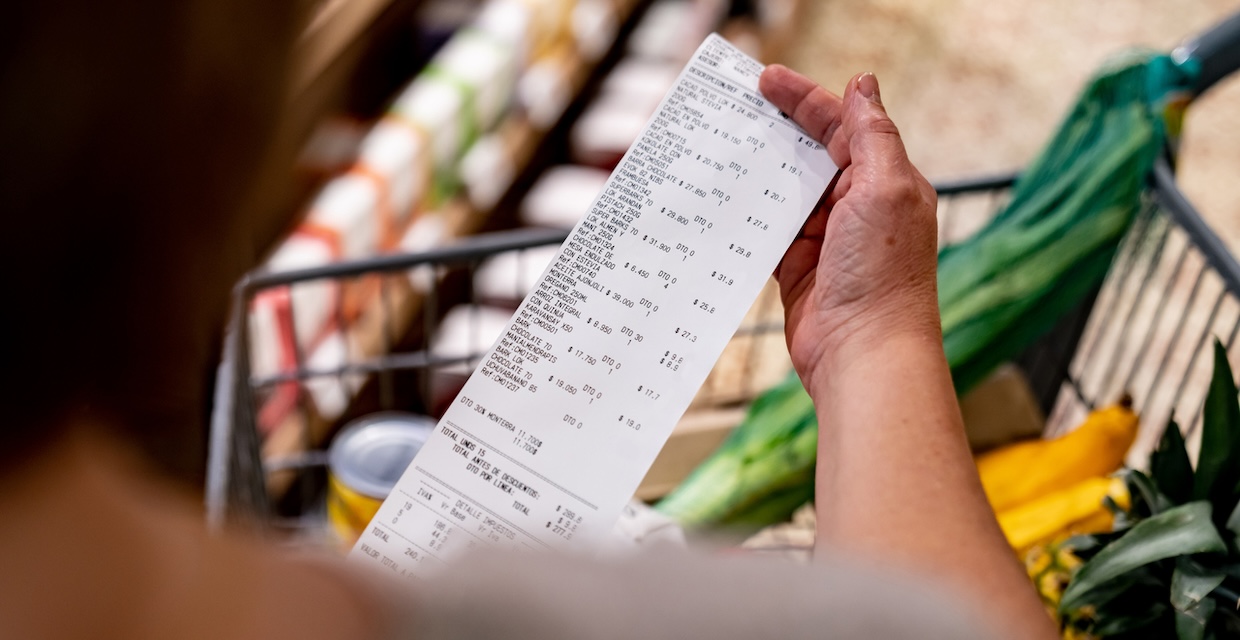Key Points
- There are plenty of tips and tricks you can follow to eat healthy on a budget.
- Frozen, canned, and bulk foods tend to be the most affordable.
- Working with a registered dietitian is one the best ways to start prioritizing your health – and it’s probably more affordable than you think!
Many people think eating healthy is too expensive for them to afford. While it’s true that certain foods, like organic produce, tend to be more expensive, there are still a myriad of ways to eat healthy on a budget. You might be surprised by how affordable fresh and frozen ingredients can be compared to packaged, processed food!
Eating healthy might seem intimidating at first, but with these tips and guidance from a registered dietitian, you’ll soon see that small changes to your diet add up quickly and can make a real difference. Let’s talk about how to eat healthy on a budget.
What does “eating healthy” mean?
The concept of “health” is relatively subjective, and “healthy” looks different for everyone. “When it comes to health, we focus on healthy habits rather than a singular lifestyle or definition,” says registered dietitian Rita Faycurry. “That way, people can turn their focus to their individual health rather than striving to fulfill a potentially impossible ideal.”
Healthy diets include behaviors like:
- Eating a variety of fruits and vegetables, both fresh and cooked
- Prioritizing whole grains
- Consuming protein-rich foods, like meat and fish, or plant-based options like lentils and beans
- Picking unsaturated sources of fat like olive oil, nuts, seeds, and fish
- Eating seasonal foods
- Limiting consumption of saturated fats, added sugars, sodium, and alcohol
These are simple guidelines you can keep in mind as you strive to improve your health.
Tips to stay healthy on a budget
Here are some tips to create healthy meals from budget-friendly foods.
Vegetables
Veggies are usually cheapest frozen or canned. Fresh produce does go on sale, so be sure to keep an eye on your local store’s offers. Produce is frozen at peak ripeness, meaning it retains its nutritional value and flavor. Keep an eye on the nutrition label – some frozen vegetables have added salt or sauces. Look for frozen packages that only have vegetables in them.
Fruit
Similarly, fruit is typically most affordable frozen. Because fresh fruit is so seasonal, whatever is in season is usually cheaper. While many canned fruits have added sugars, some are canned in water, and these cans are also usually more affordable and still have great health benefits.
Protein
Protein can add up quickly on your grocery bill, but there are ways to keep the cost as low as possible. Opt for canned salmon or tuna rather than fresh filets. When it comes to meat, chicken breast and pork chops are usually the cheapest cuts of meat, but there are often sales, so you can always opt for the most affordable option at the time. Eggs often go on sale. For plant-based protein options, dehydrated beans, often sold in bulk, can be cheaper than canned beans. Tofu is another good option.
Whole grains
Whole grains are so nutritious. They’re rich in fiber and micronutrients and also help you feel fuller for longer. They are the most affordable when bought in bulk. You can typically find brown rice, black beans, oats, quinoa, farro, whole grain pasta, and cornmeal in the bulk aisle, all of which are a healthy choice for grains.
Dairy
Opt for high-protein options for your dairy sources, like Greek yogurt and cottage cheese. These often go on sale when bought in larger quantities.
How to get the most out of your groceries
Make a plan for your grocery shopping trip. Going into your grocery store without a plan is a recipe for overspending. You are more likely to get distracted by new products or stressed by the overwhelm of trying to figure it out on the spot, causing you to go over budget or make poor choices. Set yourself up for success by outlining which healthy foods you need for the weak based on your meal planning. And don’t deviate from your grocery list – unless you find a better deal and can swap one ingredient for another.
Keep a list of recipes you enjoy. These healthy recipes should utilize staples – like whatever whole grains you keep in your pantry, your protein of choice, the spices in your spice cabinet, and whatever produce you enjoy or is in season – so that you can easily rotate through recipes without buying too many additional ingredients.
Repurpose leftovers. Batch cooking means you will have plenty of ready-made food on hand which can be eaten and repurposed the next day or later in the week. This helps reduce food waste and sets you up for success to keep up your healthy habits. If you’re cooking a stew, for example, you can prepare more of the veggies or protein than you need for the stew itself and use them for another recipe.
Buy in bulk. While bulk options may be more expensive upfront, they are often more cost-effective. Do a cost analysis to see if it makes sense for you.
Shop seasonally. Seasonal produce is typically the cheapest. Why? It’s the most readily available. It’s more likely to be local, too. You can find what’s in season in your region here.
Choose generic brands. Store brands are almost always cheaper than brand names and are often of similar quality.
Store your food well. Fresh produce and meat can spoil if they’re not stored properly. It’s important to understand different foods’ shelf lives so that you don’t eat spoiled food but also so you don’t accidentally cause food waste. Learn how to preserve your groceries to avoid losing money.
Look for deals. Consider shopping at multiple stores, using points, and using coupons to get the most bang for your buck on your shopping list.
How a dietitian can support your health goals
Working with a registered dietitian nutritionist is an excellent way to support your overall wellness and learn how to create balanced meals on a budget. “Dietitians have the experience and know-how to help you be your healthiest self while staying within your individual means,” says Rita Faycurry, RD. “They are excellent partners for anyone who wants to put their health first.”
Before you worry that you can’t afford an RD, know that they are covered by health insurance in the US. With Fay Nutrition, you can input your insurance information and see how what’s covered. Many clients pay as little as $0 per session! You can get top-quality nutrition guidance at an affordable price.
Here are some ways RDs can help you create healthier habits on a budget:
- Educate on the most nutritious foods. Your dietitian can help walk you through the nutritional value of different foods and why certain foods are better for you than others.
- Identify quality sources of protein, carbohydrates, and fats. Not all macronutrients are created equal – your RD will help spell out the difference between simple and complex carbs, the value of fiber, and more.
- Create nutritious meals that fit your budget. Working with an RD takes the guesswork out of meal planning! They can help you create delicious, healthy meals you love that don’t break the bank.
- Make better food choices. If you struggle to prioritize healthy foods or find yourself impulse buying a lot of processed food, your RD can help reframe your mindset so that you can start making healthier choices.
- Answer key questions. Whatever you struggle with when it comes to food and feeding yourself, your RD is there to answer. They can help work on healthy habits, meal planning, maximizing your grocery trip to find the healthiest foods at the lowest price, and more. They are there to offer their experience and expertise to support your goals.
Ready to get started with a registered dietitian and put your health first? Click here to get started with Fay Nutrition.
The views expressed by authors and contributors of such content are not endorsed or approved by Fay and are intended for informational purposes only. The content is reviewed by Fay only to confirm educational value and audience interest. You are encouraged to discuss any questions that you may have about your health with a healthcare provider.
Sources
- Foods - Health Effects of Whole Grains: A Bibliometric Analysis
- Academy of Nutrition and Dietetics - Frozen Foods: Convenient and Nutritious










